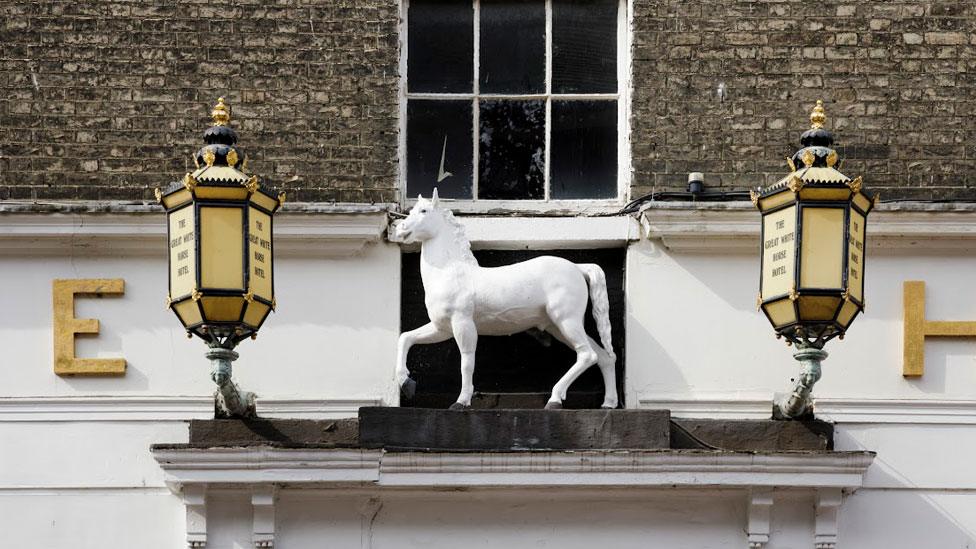Chemical Brothers' album church on 'at risk' list
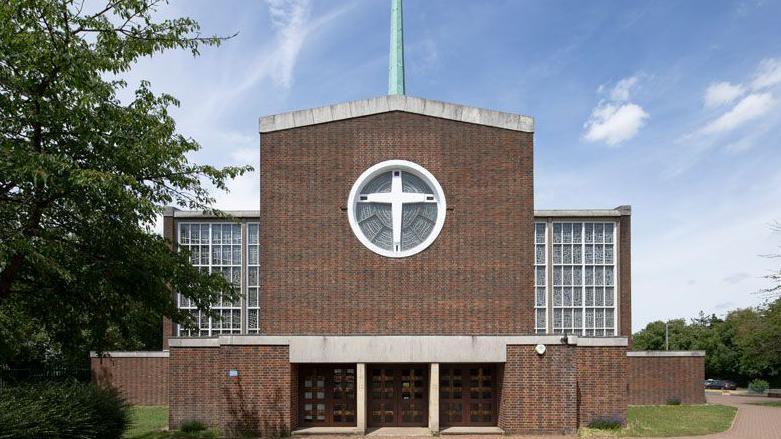
The distinctive spire structure of the Roman Catholic Church of Our Lady of Fatima in Harlow is rotting and its roof needs maintenance
- Published
A church which featured on a Chemical Brothers' album cover was in "desperate need of support" and has been added to the Historic England at risk register.
It was among 29 buildings in the East of England placed on the register for 2024. The region has 427 entries this year, 15 more than 2023.
Historic England chief executive Duncan Wilson said: "Together, we can save our places and find new ways to enjoy the heritage that people value so much.”
The organisation also awarded £730,000 in grants to repair 25 sites in 2023 to 2024 which helped saved and remove 14 sites from the register.
The Heritage at Risk Register is Historic England's "annual snapshot of the health of England’s valued historic buildings and places".
Among the 427 entries in the East of England, were 132 places of worship, 11 parks and gardens and one protected wreck site.
The organisation said its latest research showed, external the region's heritage sector contributed £4.6 billion to the economy and employed 63,000 people annually in 2022.
Heritage minister Sir Chris Bryant said: “The UK has an abundance of heritage sites across the country that attract tourists and provide jobs in local communities.
"Many of these are in desperate need of support.”
Chemical Brothers' album cover church in Harlow
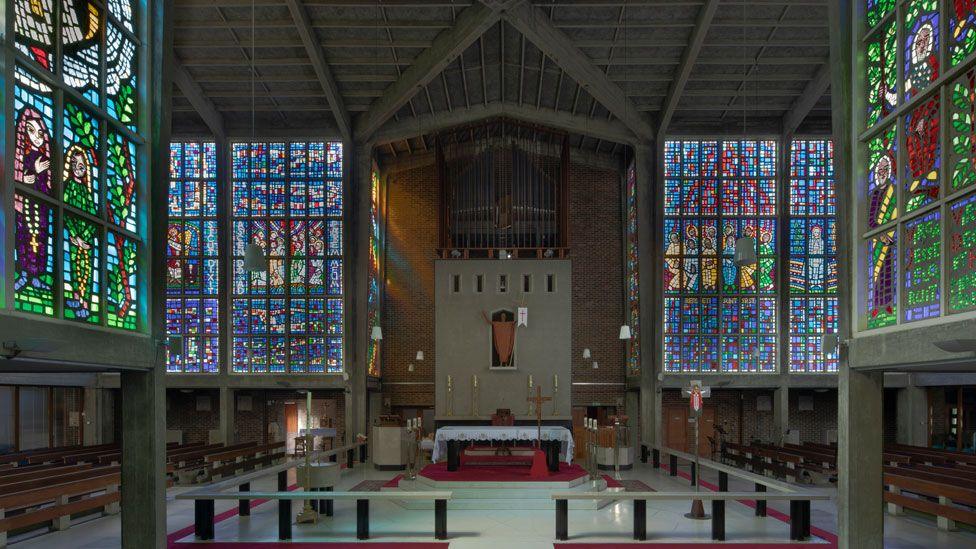
It is "much-loved by the community of Harlow, who have raised more than £70,000 towards its repair and restoration", Historic England said
The Roman Catholic Church of Our Lady of Fatima in Harlow, Essex, was featured on the 1998 Chemical Brothers album, Brothers Gonna Work It Out.
It was the first ecclesiastical commission by Gerard Goalen (1918-1999), who designed it in 1953-1954 and was considered "one of the most important British architects of the Roman Catholic Modernist movement".
Harlow was one of 20 entirely new towns created under the 1946 New Towns Act. The Grade II* listed building has a prominent urban location in New Town.
Mr Goalen gave the building a strikingly modernist style with stunning large glass panels, but its distinctive spire structure is rotting and the roof needs maintenance.
A medieval chapel for a leper hospital in Cambridge

The 900-year-old building owes its survival to the Stourbridge medieval fair, which began in King John's reign and survived up until the 18th Century
The 12th Century chapel of St Mary Magdalen is one of the oldest complete surviving buildings in Cambridge.
It was originally the chapel of an isolation hospital caring for people with leprosy and has been a bar and a warehouse over the centuries.
The Grade I listed building owes its survival to its connection with the Stourbridge medieval fair, one of the largest in Europe.
It is currently at risk due to issues with damp, drainage, the roof and cracking masonry, and owner Cambridge Past, Present and Future has warned it needed at least £250,000 to pay for its repairs.
Somerleyton Victorian glasshouses

The designer of the Crystal Palace, which housed the 1851 Great Exhibition in London, is believed to have also designed these glasshouses, used as peach houses
Glasshouses believed to be created by the Crystal Palace designer Sir Joseph Paxton, external (1801-1865) showed signs of structural vulnerability and brickwork decay.
They are part of a Grade II* listed walled kitchen garden which was built in about 1846 at the stately home Somerleyton Hall, in Somerleyton, Suffolk.
The house - which Historic England described as the "one of the finest Victorian stately homes in the country" - was owned by Sir Samuel Morton Peto, an engineer and railway pioneer, before it was bought by carpet manufacturer Sir Francis Crossley.
About 14 volunteers currently visit the house for gardening activities.
An ancient house in need of repairs in Norwich
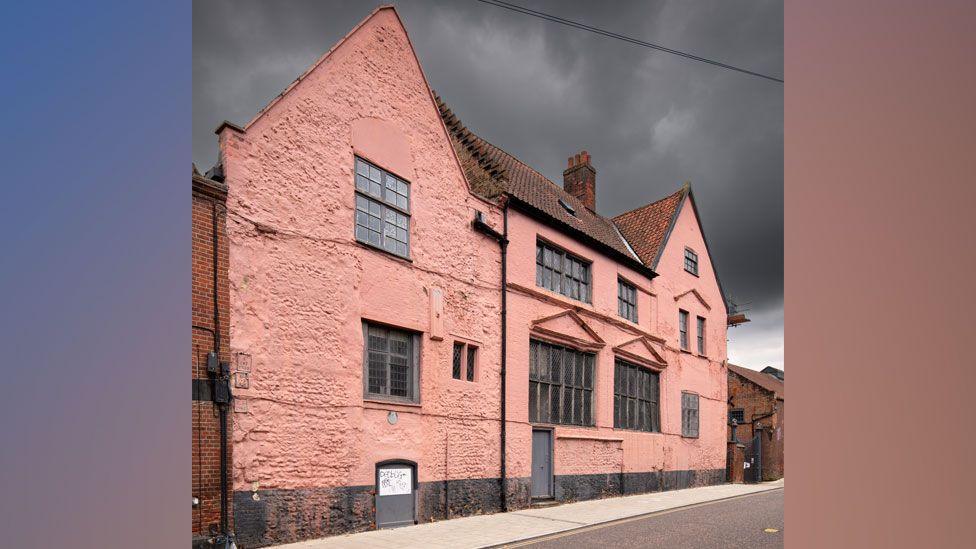
The Music House was home to the Jurnet family between 1170 and 1240, a wealthy merchant family who moved to Norwich after the Norman Conquest
One of the oldest houses in Norwich dating back to the 12th Century - and the only secular building to have survived from that period - needed to be preserved, according to Historic England.
The Grade I listed Music House featured a stunning arched undercroft, while its facade on The King Street largely dates to the 17th Century.
It has links to the Paston family, who left behind a remarkable collection of letters surviving from the 15th to the 17th centuries, external, and Lord Chief Justice Coke, a 17th Century politician who was instrumental in the Petition of Right, external.
Norwich City Council has already begun some urgent repair work.
Another Norwich landmark added to the register was the Roman Catholic Cathedral of St John the Baptist.
The cathedral, which was completed in 1910, was deemed “at risk” due to issues with the rainwater pipes which were at full capacity. It also had failing gutters which leaked into the roof.
Removed from list
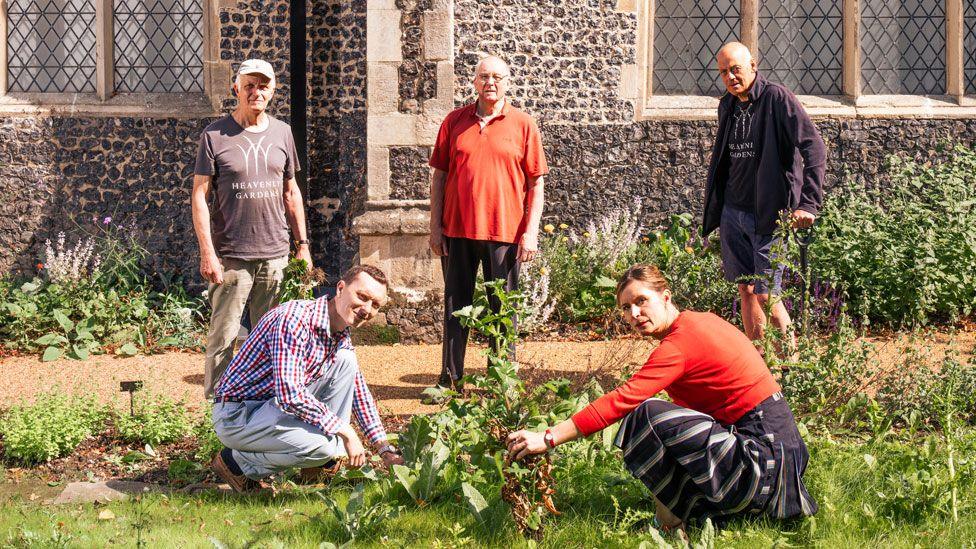
St Margaret de Westwick Church closed as a place of worship in 1975 and is now cared for by the Norwich Historic Churches Trust
In better news, Grade I listed St Margaret's Church, on Benedict Street, Norwich, is no longer at risk, after receiving funding from Historic England to repair its roof, masonry and drainage.
It is one of 31 surviving medieval churches within the city walls of Norwich and will host a community art exhibition this winter.
The 500-year-old Church of St Edmund, Kessingland, Suffolk, has also been repaired, re-thatched and is off the at risk register.
A programme of social activities is planned to keep the Grade I listed church at the centre of village life.
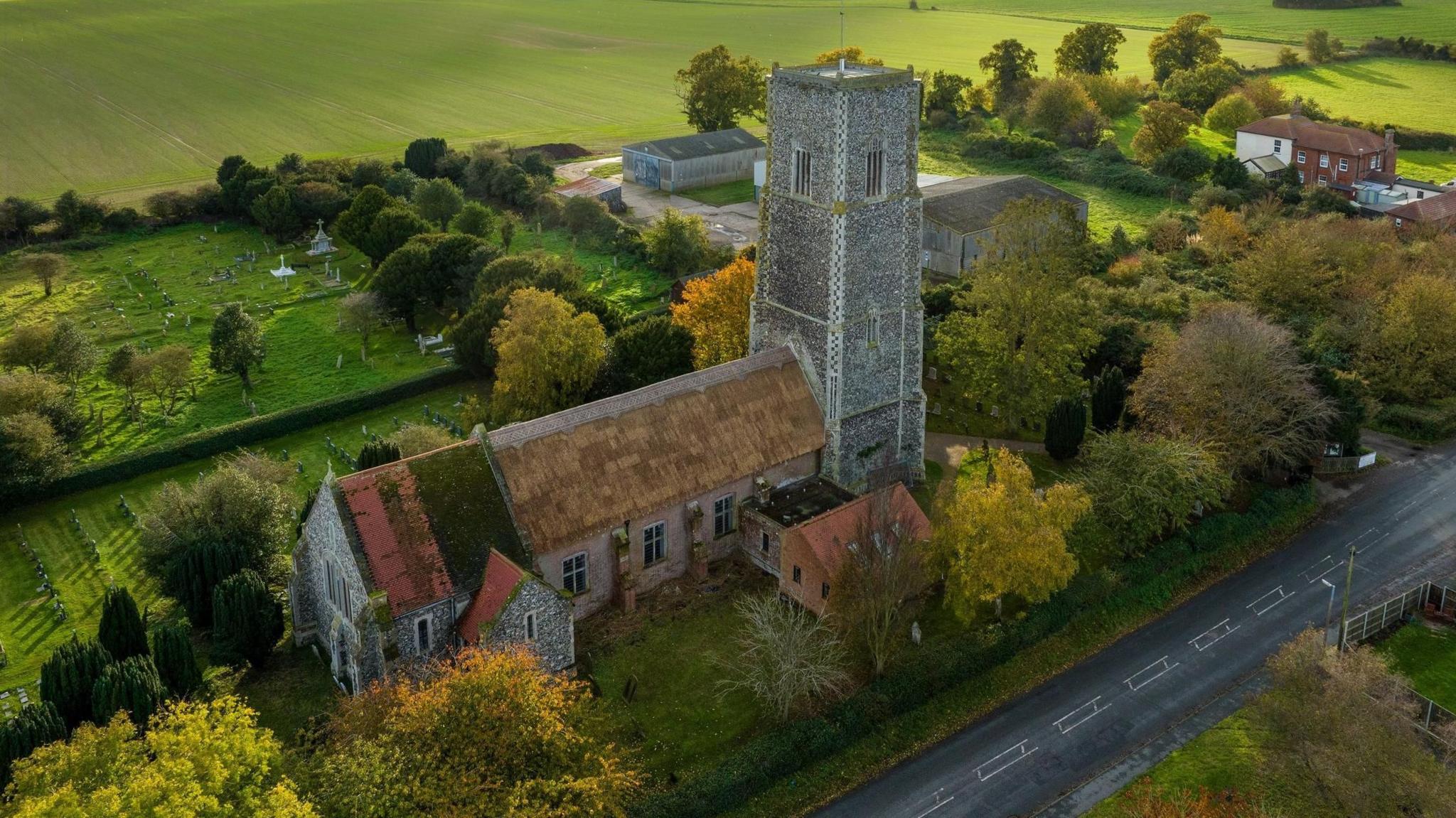
St Edmund's Church reopened on Easter Sunday after completion of a £300,000 repair to its thatched roof
Get in touch
Do you have a story suggestion for Suffolk?
Follow Suffolk news on BBC Sounds, Facebook, external, Instagram, external and X, external.
Four new places in Essex have historic buildings that could be lost forever.
- Published2 September 2024
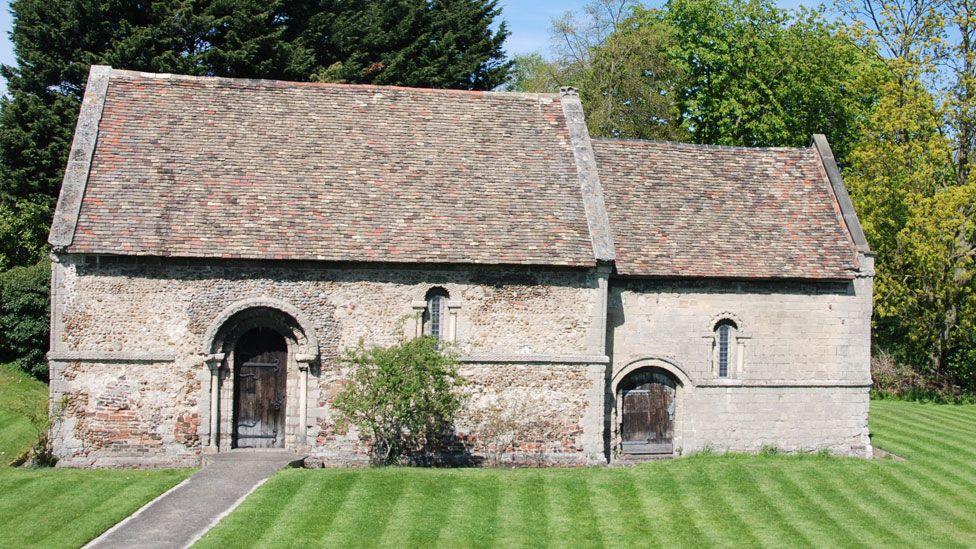
- Published31 July 2024

- Published9 November 2023
